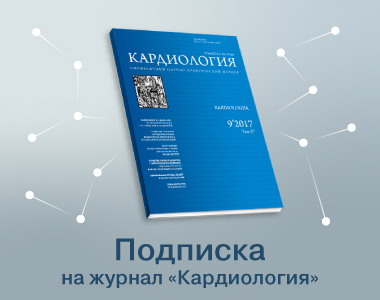Management of radio-contrast allergy in radio-contrast allergic patients undergoing coronary angiography and intervention
https://doi.org/10.18087/cardio.2020.10.n1117
Abstract
Objectives Radiocontrast agents (RCA) allergy occurs in 0.04 % – 0.22 % of patients. However, the risk of allergic reaction increases as 16 % to 35 % in patients with prior RCA allergy. Herein we reported our experience in patients with a prior history of RCA induced anaphylaxis who underwent coronary angiography (CAG) and intervention.
Methods This retrospective study included 11 patients with prior history of RCA anaphylaxis who underwent CAG and / or intervention at our clinic between May 2016 and September 2019. The mean age of the patients was 61.8±8.99 years, 8 (72.7 %) were female, 9 (81.8 %) had hypertension, 6 (54.5 %) – diabetes mellitus, 11 (100 %) – dyslipidemia, 8 (72.7 %) patients were current smokers, 4 had prior history RCA allergy after i.v. RCA administration in contrast enhanced computed tomography and 7 patients experienced RCA allergy after CAG. All patients had prior severe anaphylaxis reaction. All patients were pretreated with intravenous feniramin maleat 45.5 mg and methylprednizolone 80 mg one hour before the procedure and dexametazon 8 mg after the procedure.
Results CAG and intervention was successfully completed in all patients. Two patients had breakthrough RCA induced anaphylaxis, theyhad urticarial, itching, dyspnea and chest tightness, angioedema during coronary artery stenting. Additional dose of i.v. methylpredinisolene 80 mg, salbutamol nebulae and i.v. adrenalin 1 mg administration rapidly stabilize the patients. All patients were successfully treated and uneventfully discharged after percutaneous coronary intervention.
Conclusion Management of patients with prior RCA adverse drug reaction may be complex. However when CAG and / or intervention is required in such patients it may be safely performed with premedication.
About the Authors
Ahmet Çağrı AykanTurkey
M.D., Assoc. Prof.
Duygun Altıntaş Aykan
Turkey
M.D., Assit. Prof.
Mahmut Tuna Katırcıbaşı
Turkey
M.D., Prof.
Sami Özgül
Turkey
M.D., Prof.
References
1. Rosado Ingelmo A, Doña Diaz I, Cabañas Moreno R, Moya Quesada M, García-Avilés C, García Nuñez I et al. Clinical Practice Guidelines for Diagnosis and Management of Hypersensitivity Reactions to Contrast Media. Journal of Investigational Allergology and Clinical Immunology. 2016;26(3):144–55. DOI: 10.18176/jiaci.0058
2. Demoly P, Adkinson NF, Brockow K, Castells M, Chiriac AM, Greenberger PA et al. International Consensus on drug allergy. Allergy. 2014;69(4):420–37. DOI: 10.1111/all.12350
3. Joint Task Force on Practice Parameters, American Academy of Allergy. Drug Allergy: An Updated Practice Parameter. Annals of Allergy, Asthma & Immunology. 2010;105(4):259-273.e78. DOI: 10.1016/j.anai.2010.08.002
4. Macy E. Current Epidemiology and Management of RadiocontrastAssociated Acute- and Delayed-Onset Hypersensitivity: A Review of the Literature. The Permanente Journal. 2018;22:17–072. DOI: 10.7812/TPP/17-072
5. Sánchez-Borges M, Aberer W, Brockow K, Celik GE, Cernadas J, Greenberger PA et al. Controversies in Drug Allergy: Radiographic Contrast Media. The Journal of Allergy and Clinical Immunology: In Practice. 2019;7(1):61–5. DOI: 10.1016/j.jaip.2018.06.030
6. Greenberger P, Patterson R, Radin R. Two pretreatment regimens for high-risk patients receiving radiographic contrast media. Journal of Allergy and Clinical Immunology. 1984;74(4):540–3. DOI: 10.1016/0091-6749(84)90391-9
7. Marshall GD, Lieberman PL. Comparison of three pretreatment protocols to prevent anaphylactoid reactions to radiocontrast media. Annals of Allergy. 1991;67(1):70–4. PMID: 1859044
8. Khan DA, Solensky R. Drug allergy. Journal of Allergy and Clinical Immunology. 2010;125(2 Suppl 2):S126-S137.e1. DOI: 10.1016/j.jaci.2009.10.028
9. Li X, Liu H, Zhao L, Liu J, Cai L, Liu L et al. Clinical observation of adverse drug reactions to non-ionic iodinated contrast media in population with underlying diseases and risk factors. The British Journal of Radiology. 2017;90(1070):20160729. DOI: 10.1259/ bjr.20160729
10. Jingu A, Fukuda J, Taketomi-Takahashi A, Tsushima Y. Breakthrough reactions of iodinated and gadolinium contrast media after oral steroid premedication protocol. BMC Medical Imaging. 2014;14(1):34. DOI: 10.1186/1471-2342-14-34
11. Mervak BM, Davenport MS, Ellis JH, Cohan RH. Rates of Breakthrough Reactions in Inpatients at High Risk Receiving Premedication Before Contrast-Enhanced CT. American Journal of Roentgenology. 2015;205(1):77–84. DOI: 10.2214/AJR.14.13810
12. Bottinor W, Polkampally P, Jovin I. Adverse Reactions to Iodinated Contrast Media. International Journal of Angiology. 2013;22(03):149–54. DOI: 10.1055/s-0033-1348885
13. Greenberger PA, Halwig JM, Patterson R, Wallemark CB. Emergency administration of radiocontrast media in high-risk patients. The Journal of Allergy and Clinical Immunology. 1986;77(4):630–4. DOI: 10.1016/0091-6749(86)90357-x
14. Lieberman P, Nicklas RA, Randolph C, Oppenheimer J, Bernstein D, Bernstein J et al. Anaphylaxis—a practice parameter update 2015. Annals of Allergy, Asthma & Immunology. 2015;115(5):341–84. DOI: 10.1016/j.anai.2015.07.019
15. Montandon SV, Petrov AA, Fajt ML. A Novel Pretreatment Regimen for Breakthrough Radiocontrast Media Anaphylaxis in Cardiac Patients. Critical Pathways in Cardiology. 2016;15(4):161–4. DOI: 10.1097/HPC.0000000000000088
Review
For citations:
Aykan A.Ç., Altıntaş Aykan D., Katırcıbaşı M.T., Özgül S. Management of radio-contrast allergy in radio-contrast allergic patients undergoing coronary angiography and intervention. Kardiologiia. 2020;60(10):62-65. https://doi.org/10.18087/cardio.2020.10.n1117

















